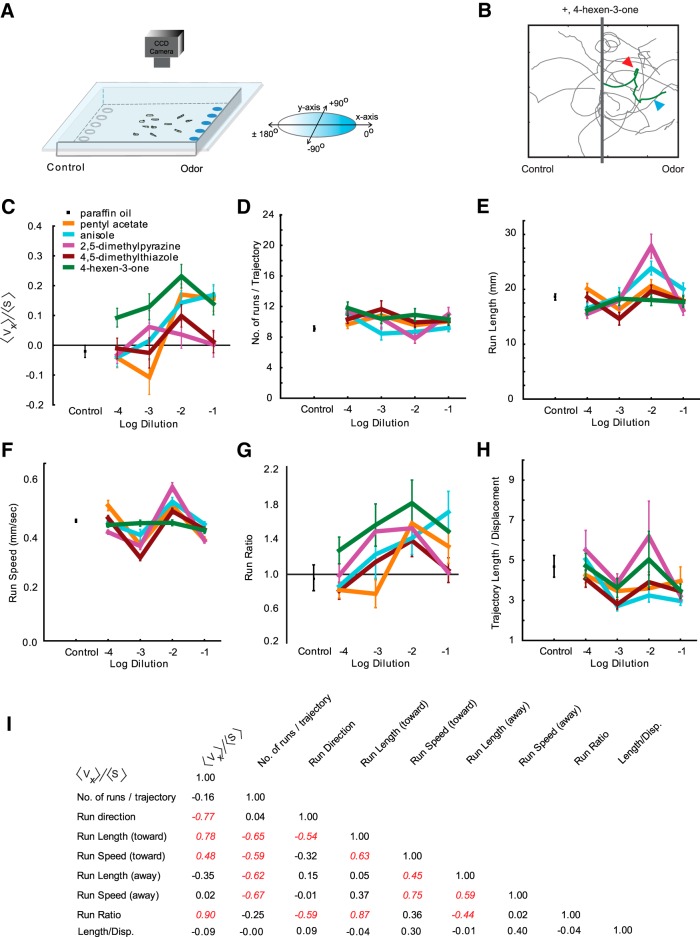Fig. 2.
Navigational analysis of wild-type D. melanogaster larvae. A, Paradigm containing a 22 × 22 cm2 agarose Petri plate. Odorant is placed on discs at the right; paraffin oil diluent alone is placed on discs to the left. The chamber is sealed by placing a clear glass plate over the arena. Third-instar larvae are placed in the center. The movement of larvae is recorded with a CCD camera. B, Sample trajectories of wild-type larvae in response to 4-hexen-3-one (10−2 dilution). The gray bar along the y-axis indicates the starting position of larvae. A “stop” (red arrowhead) is defined by a 45° or greater change in trajectory angle. A “run” (blue arrowhead) is defined as the length of trajectory between two stops. Runs are quantified in terms of length, speed, and direction. C–H, Dose–response analysis of six navigational parameters for each odorant in the navigational assay. Odorants were tested at four different dilutions (10−1, 10−2, 10−3, 10−4), which are depicted on the x-axis of each graph. The y-axes in each graph are as follows: navigational indices (<vx>/<s>) of larvae to indicated dilutions of five odorants and paraffin oil (C); the mean number of runs per trajectory (D); the mean length of runs in millimeters (E); the mean speed of runs in millimeters per second (F); the ratio of mean run lengths in the direction of odorant (all runs that oriented between +45° and −45°) to mean run lengths away from odorant (all runs that oriented between +135° to −135°; G); and the mean length/displacement defined as total length of each trajectory is divided by the total displacement of each trajectory (H). Each data point represents the mean ± SEM (n = 8 assays, ∼100–120 trajectories analyzed for each condition). I, Correlation matrix displaying r 2 values among various behavioral parameters tested. Values italicized and in red are statistically significant (p < 0.05).

